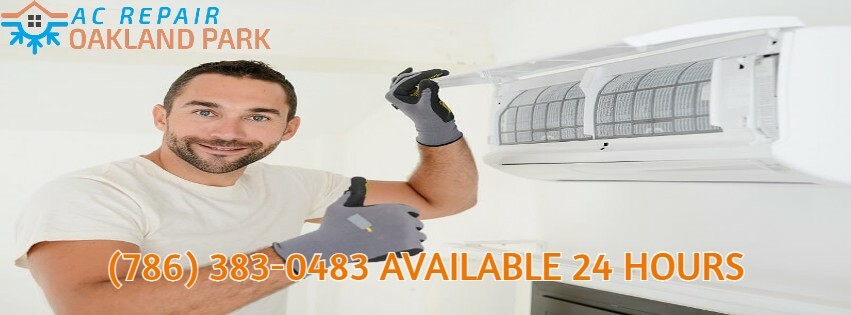How to Use Air Conditioners Sustainably?

In today’s world, where the demand for cooling is rising, it’s crucial to consider the environmental impact of our air conditioning habits. While AC units provide comfort, they also contribute to energy consumption and carbon emissions. However, with the right practices, we can use air conditioners sustainably.
Ahead in this blog, we’ll explore practical tips for reducing energy usage, improving efficiency, and minimizing environmental impact. Plus, we’ll discuss the importance of regular maintenance and highlight the role of timely AC Repair Oakland Park services in keeping your system running smoothly.
Understanding Air Conditioner Efficiency
To use air conditioners sustainably, it’s essential to understand their efficiency ratings. Look for units with high SEER (Seasonal Energy Efficiency Ratio) or EER (Energy Efficiency Ratio) ratings, as they consume less energy while providing optimal cooling. By choosing energy-efficient models, you not only save money on utility bills but also reduce your carbon footprint.
Optimizing Air Conditioner Settings
Optimizing air conditioner settings is a crucial aspect of using AC units sustainably. By making thoughtful adjustments, you can maximize efficiency and minimize energy waste. Here are some tips for optimizing air conditioner settings:
- Set the Thermostat Appropriately: During the summer months, aim for a thermostat setting between 75°F and 78°F when at home. When away from home, raise the thermostat temperature to reduce energy consumption. Consider using a programmable thermostat to automate temperature adjustments based on your schedule.
- Use Fans to Supplement Cooling: Ceiling fans or portable fans can help distribute cool air more effectively throughout your home. Use fans in conjunction with your air conditioner to maintain comfort while allowing you to raise the thermostat setting slightly.
- Avoid Drastic Temperature Changes: Resist the temptation to set the thermostat to a very low temperature for quick cooling. It not only wastes energy but also puts unnecessary strain on your AC unit. Instead, opt for gradual temperature changes and allow time for your home to reach the desired comfort level.
- Utilize Zoning Features: If your air conditioning system has zoning capabilities, take advantage of them to cool specific areas of your home based on occupancy and preferences. It allows you to avoid cooling unoccupied rooms, reducing energy consumption and improving efficiency.
- Take Advantage of Night Cooling: In areas where temperatures drop significantly at night, consider opening windows and allowing natural ventilation to cool your home instead of running the air conditioner. It can be particularly effective during mild summer evenings, reducing reliance on mechanical cooling and saving energy.
- Maintain Consistent Airflow: Ensure air vents and registers are unobstructed to maintain consistent airflow throughout your home. Clean or replace air filters regularly to prevent blockages and improve air quality. Clogged filters restrict airflow, reducing the efficiency of your AC unit and increasing energy consumption.
- Consider Smart Thermostat Technology: Invest in a smart thermostat that learns your cooling preferences and adjusts settings automatically to optimize energy usage. Smart thermostats can also provide insights into your energy consumption patterns, helping you make informed decisions to improve efficiency further.
Implementing these strategies for optimizing air conditioner settings can help reduce energy consumption, lower utility bills, and minimize environmental impact while staying comfortable indoors.
Regular AC Maintenance Practices
Regular maintenance practices are crucial for keeping your air conditioning system running efficiently and effectively. Here are some key steps you should take:
- Change or Clean Air Filters: Dirty filters restrict airflow, reducing efficiency. So, replace or clean them monthly.
- Inspect and Clean Coils: Dirt on coils hinders heat transfer. Schedule annual maintenance to clean evaporator and condenser coils.
- Check Refrigerant Levels: Low levels indicate a leak, which can impact cooling capacity. Make sure to have AC Repair Oakland Park professionals check and recharge refrigerant as needed.
- Clean Air Ducts: Dirty ducts restrict airflow and affect indoor air quality. Get them inspected and cleaned every few years.
- Lubricate Moving Parts: Lubricate fan motors, bearings, and belts to reduce friction and energy consumption.
- Test Thermostat Accuracy: Ensure your thermostat is accurate and calibrated for precise temperature control.
These maintenance practices can extend the lifespan of your AC unit, improve efficiency, and save on energy costs. Moreover, professional maintenance should be scheduled annually to catch any potential issues early.
Additional Tips for Reducing Energy Consumption
Reducing energy consumption is essential for minimizing environmental impact and lowering utility bills. Here are some additional tips to help you save energy while staying comfortable indoors:
- Use Energy-Efficient Appliances: Replace old, inefficient appliances with ENERGY STAR® certified models, which consume less energy and operate more efficiently.
- Unplug Electronics When Not in Use: Turn off and unplug electronics and appliances when they’re not in use to prevent “phantom” energy consumption from standby power.
- Upgrade to LED Lighting: Replace traditional incandescent bulbs with energy-efficient LED bulbs, which use less energy and last longer.
- Seal Leaks and Insulate: Seal gaps and cracks around doors, windows, and ductwork to prevent air leaks and improve insulation. Consider adding insulation to walls, ceilings, and attics to reduce heat transfer and maintain consistent indoor temperatures.
- Reduce Hot Water Usage: Lower the temperature on your water heater to save energy. Install low-flow fixtures and aerators to reduce water usage without sacrificing performance.
- Practice Energy-Efficient Cooking: Use small appliances like toaster ovens and slow cookers instead of the oven or stove for cooking smaller meals. Opt for microwave cooking when possible, as it uses less energy than conventional cooking methods.
- Limit Use of Energy-Intensive Appliances: Washing machines, dishwashers, and dryers should be used during off-peak hours to reduce strain on the electrical grid and save energy.
- Implement Smart Home Technology: Invest in smart home devices, such as smart thermostats, lighting systems, and power strips, to automate energy-saving behaviors and optimize energy usage based on your preferences and schedule.
- Reduce Phantom Loads: Use power strips to easily turn off multiple electronics and appliances at once, reducing standby power consumption. Enable power-saving features on electronics and computers to minimize energy usage when they’re not in use.
- Monitor and Track Energy Usage: Use energy monitoring tools or smart meters to track your home’s energy usage in real time and identify areas where you can make further energy-saving improvements.
Incorporating these additional tips into your energy-saving efforts can further reduce your carbon footprint, lower your utility bills, and contribute to a more sustainable future. Experiment with different strategies to find what works best for your home and lifestyle, and don’t hesitate to seek professional advice for personalized energy-saving recommendations.
Alternative Cooling Strategies
While air conditioners offer effective cooling, there are alternative strategies to consider for reducing energy consumption. Alternative cooling strategies provide sustainable and cost-effective ways to stay comfortable indoors while reducing reliance on traditional air conditioning. Here are some effective alternatives:
- Natural Ventilation: Open windows and doors during cooler times of the day to allow fresh air to circulate. Use window fans or whole-house fans to promote natural ventilation and cooling.
- Ceiling and Portable Fans: Install ceiling fans to improve air circulation and create a breeze. Use portable fans strategically to direct airflow where needed.
- Shading and Insulation: Install blinds, shades, or curtains to block out direct sunlight. Ensure proper insulation to prevent heat transfer.
- Heat-Reflective Roofing Materials: Consider heat-reflective roofing materials to reduce heat absorption.
- Outdoor Shade Structures: Create shade structures to block direct sunlight.
- Cooling Mattress and Bedding: Invest in cooling mattress pads or breathable bedding materials.
- Strategic Planting: Plant shade trees or shrubs around your home.
- Evaporative Coolers (Swamp Coolers): Use evaporative coolers in dry climates for energy-efficient cooling.
Incorporate these strategies to reduce energy consumption, lower utility bills, and maintain comfort indoors while minimizing environmental impact. Experiment with different approaches to find what works best for your home and lifestyle.
Final Words
Using air conditioners sustainably is not only beneficial for the environment but also for your wallet. By following the tips outlined in this post, you can reduce energy consumption, improve efficiency, and minimize your carbon footprint.
Remember to prioritize regular maintenance and consider professional AC Repair Oakland Park services to keep your system running smoothly. Together, we can enjoy cool comfort without compromising the health of our planet.

























